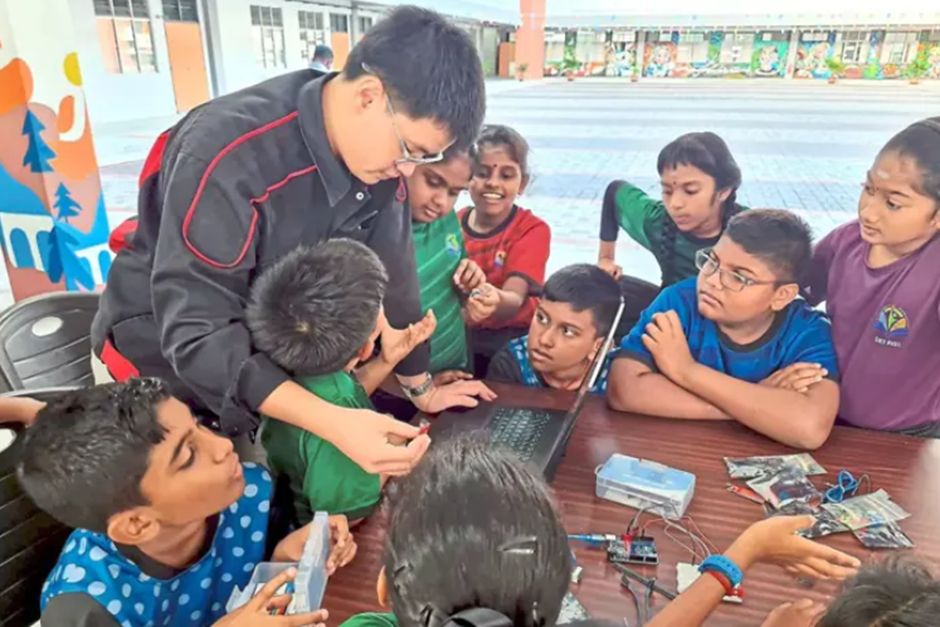Technologies like Virtual Reality and Robotics Could Reduce the Energy Industry's Carbon Footprint
- Automate Asia Magazine

- Oct 6, 2022
- 3 min read
Technologies like Virtual Reality and Robotics Could Reduce the Energy Industry's Carbon Footprint and Advance Workers' Skill Sets

Oil-and-gas companies are under pressure to lower their carbon footprints.
Drones and four-legged robots are being used to detect methane leaks.
This article is part of the "Innovation at Work" series exploring the trends and the barriers to workplace transformation.
Get a daily selection of our top stories based on your reading preferences.
R&D for emerging tech is sometimes viewed as a discretionary expense. But it's critical for oil-and-gas companies if they want to reduce their massive operating costs amid energy-price volatility.
Technological advancements have the potential to contribute real business value. A 2020 study by Ernst & Young looked at 124 jobs within the Canadian oil-and-gas industry and found that innovations like robotic-process automation, artificial intelligence, natural-language processing, and machine learning could reduce staff by up to 30% and automate 50% of job competencies in upstream oil and gas by 2040.
Players in the industry are realizing they have to make expensive short-term investments to have a chance at long-term operational savings. Unpredictable events like the pandemic exposed new vulnerabilities — the demand for oil dropped by 30% amid COVID lockdowns and stay-at-home orders.
The sector also saw more investors take positions in their portfolios in response to climate-crisis risks. Governments have also taken actions to reduce greenhouse-gas emissions from the oil-and-gas sector to meet their net-zero goals.
The pressure on oil-and-gas companies "to increase operational efficiency while decreasing carbon footprints has been relentless," Lance Mortlock, the energy leader at Ernst & Young Canada, told Insider. "This has created a ripe opportunity for technology to play an even greater role in the energy sector."
However, to realize the full value of technology investments, energy leaders will need to upgrade workers' skill sets and attract higher-skilled labor in areas like robotics, software engineering, and data analytics.
'Digital twins' optimize energy projects
Oil-and-gas leaders are using virtual reality and augmented reality to create "digital twins" of current energy projects for training and simulation-based learning. Shell, for instance, has created a digital twin of its Pulau Bukom oil refinery in Singapore, with the goal of allowing engineers to operate the plant entirely with tablets. Since the plant wouldn't require employees to work in person, it would cut down on their travel-related carbon footprints. The company also hopes the digital twin could optimize rig performance and lifespan, reducing carbon outputs.
At the same time, Shell is reskilling its front-line employees, like maintenance technicians, on digital literacy and data analytics.
Enbridge, a multinational pipeline company that operates in the US and Canada, told Insider it also sees "strong potential in VR technology" and is exploring it for various applications, including pipeline safety and wind-turbine optimization.
The company's innovation labs — one located at its headquarters in Calgary and another in Houston — have tested VR to take vast amounts of data and render sections of a pipeline in 3D.
The result? Engineers are able to accurately pinpoint potential hazards, including small dents, cracks, areas of corrosion, and pipeline strain caused by incremental ground movement.
Researchers are also experimenting with VR to simulate wind turbines. This provides data to measure performance and determine optimal turbine placement — a function that maximizes turbine energy production.
Robots and drones support decarbonization efforts
Earlier this year, TotalEnergies, a French energy giant, introduced drones at its upstream oil-and-gas sites worldwide to detect methane and carbon dioxide leaks. The drones pinpoint the source of leaks with a miniature, ultralight gas sensor attached to it. The company calls the drones "an important step" toward a goal of reducing methane emissions by 50% by 2025, and by 80% by 2030.

Shell has also introduced canine robots — called "Spot" — at some of its locations. Boston Dynamics, a US-based robotics company, developed the bots, which automate mundane tasks that humans often don't perform as reliably, such as plant inspections and methane emission-leak identification. BP has been using these robots for the same purpose since 2020, including on an oil rig in the Gulf of Mexico.
Robotics and drone technology, in turn, free human talent to do more important work that maximizes their capabilities.
A path to highly skilled job creation
Mortlock said these kinds of developments will help the energy sector combat market instability and stakeholder pressure to improve their carbon footprint.
It will also help create a new talent pipeline of people who otherwise wouldn't consider the sector as innovative.
"Many highly skilled individuals are motivated by the opportunity for diverse and intriguing work," he said. "The need for digitally fluent, multidisciplinary employees will require significant upskilling of the current workforce, as well as a focus on acquiring new talent to supplement what can't be taught in-house."





-01.jpg)


